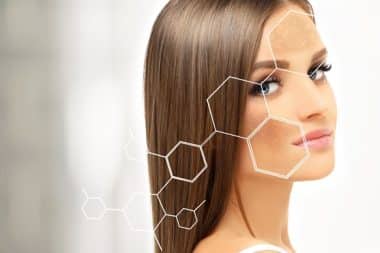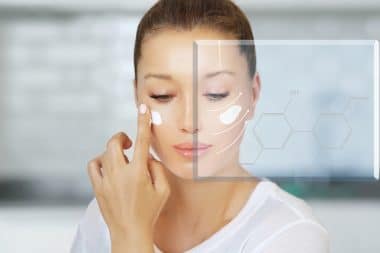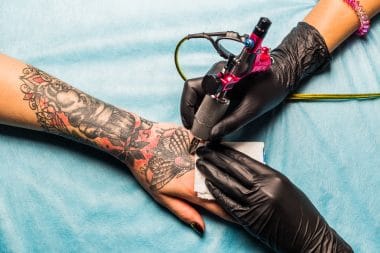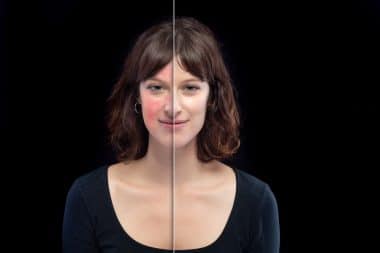Acne is a common skin condition that mostly affects individuals between the ages 12 and 16 (puberty age), though, it can also occur at any age. In the US alone, up to 50 million Americans struggle with acne every year and at least 85% of people in the US experience acne between the ages of 12 and 24.
What is Acne?
Acne vulgaris is the medical term for the common acne. It is a chronic, inflammatory skin condition that appears when the hair follicles are clogged with oil, bacteria, dirt, and dead skin cells. Although it is not life-threatening, it can be painful and it can leave permanent scars. Moreover, it can also affect one’s mental and emotional health and can lead to stress, low self-esteem, depression, and anxiety.
Causes
The skin contains pores that connect to the oil (sebaceous) glands underneath the skin. The follicle is made up of a hair and a sebaceous gland. The oil gland, by its name alone, is responsible for producing sebum (oil) that keeps the skin soft and well-lubricated.
However, when one or more problems in the lubrication process happen, it can cause acne. Below are four main factors that cause acne:
- Excessive oil production by the sebaceous (oil) gland
- Hair follicles are clogged by oil and dead skin cells
- Bacteria build up in the pores
- Excessive activity of androgens
Factors That May Worsen Acne
Below are some factors that may trigger or worsen acne:
- Hormones: Increase in androgen levels can cause the sebaceous glands to enlarge and produce more sebum, which can trigger acne formation. Moreover, high androgen levels can trigger acne by causing some changes in the skin cell activity, inflammation, and colonization of Propionibacterium Acnes in the hair follicles.
- Certain medications: Examples include birth control pills, corticosteroids, lithium or testosterone.
- Diet: Studies suggest that a diet that is rich in refined carbohydrates and sugar can trigger and worsen acne. Examples of these foods include white bread, bagels, pasta, cereals, white rice, potato chips, and energy bars. Milk, especially skim milk can also promote acne by increasing glucose and insulin levels, which can trigger the eruption of acne.
- Stress: Stress can trigger breakouts and it can make acne worse.
- Genetic factors: Genetics has an impact on acne. If your parents have acne-prone skin, you are more likely to develop acne, too.
- Greasy or oily substances: You can develop acne where your skin comes in contact with greasy cosmetics, lotion, cream, and hair wax.
Types
Acne can be found almost anywhere in the body. It can be seen on the face, shoulders, back, chest, neck, shoulders, and upper arms. Acne can be divided into two major groups: non-inflammatory and inflammatory.
Non-inflammatory acnes are the less serious ones, and they can be more likely treated with over-the-counter medications. Below are the two subtypes of acnes in this group:
- Whiteheads (closed comedones)
- Blackheads (open comedones)
Inflammatory acnes are pimples that are red and swollen. And these types of acnes are more likely to cause permanent scars. Below are the four subtypes of inflammatory acnes:
- Papules
- Pustules
- Nodules
- Cysts
Treatment Options for Acne
The treatment for acne can vary depending on how severe and persistent it is. Treatment options can range from home remedies, non-prescription treatment or over-the-counter medications to prescription medications. To some extent, certain procedures may be recommended to avoid scarring and to treat severe cases of acne.
Home Remedies
Acne can be treated with some self-care activities that can be easily done at home. These include:
- Cleaning your face twice a day with mild soap to remove excess oil and dirt
- Using makeup products that are non-comedogenic, or that don’t clog the pores
- Not squeezing or picking acne, which can just spread the bacteria and excess oil
- Not touching your face
- Consuming foods that are low in refined carbohydrates and sugar
- Following a low-glycemic diet
- Limiting milk and chocolate intake
- Spot treating acne with tea tree oil
- Applying green tea to your skin
- Reducing stress and exercising regularly
- Putting ice wrapped in a clean cloth on and off your face to reduce inflammation
- Moisturizing skin and treating acne with aloe vera gel straight from the plant
- Diluting one part apple cider vinegar to four parts water and using the solution as a toner
Non-prescription Treatment for Acne
There are several non-prescription treatments that are very much helpful for acne, which include:
- Cleansers and soaps especially made for acne. They often contain ingredients like benzoyl peroxide, glycolic acid, sulfur, or salicylic acid.
- Benzoyl peroxide
- Salicylic acid
- Sulfur
- Topical retinol gel
- Alcohol and acetone
- Resorcinol
- Azelaic Acid
Prescription Treatments
In more severe cases of acne, your dermatologist can prescribe a gel, or cream that is similar to OTC medications but stronger. They can also prescribe some oral or topical antibiotics if necessary.
- Prescription topical creams such as retinoic acid or prescription-strength benzoyl peroxide
- Topical antibiotics like clindamycin and erythromycin
- Oral inflammatory antibiotics like doxycycline, minocycline, or tetracycline
- Topical retinoids
- Isotretinoin for severe cystic acne
- Dapsone gel
- Spironolactone, especially for women who have acne that worsens during menstruation or menopausal period
- Oral contraceptives
Procedures to Treat Acne
Below are some procedures that your doctor can recommend to treat severe acne and prevent scarring:
- Dermabrasion
- Photodynamic therapy
- Chemical peel
- Cortisone injections for large cysts
Acne is a common skin condition to the point that some people can manage to just sit and wait for it to be gone. However, the truth is that untreated acne can lead to lifelong scars. And sad to say, regret always comes last.
There May Be More to Your Acne Than Just Hormones! #HealthStatus








Reply